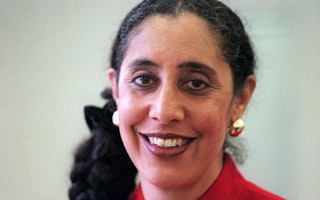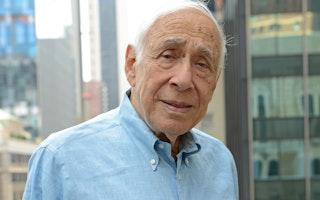Q&A: Zones Where No One Has Guns—Not Even the Police

The tragic loss of black lives at the hands of police has created momentum for reform. But Marlon Peterson, a 2015 Soros Justice Fellow, has a bolder proposition: establishing a “child-safe zone”—an area of several city blocks where no one, not even the cops, can carry firearms. He spoke with Thomas Watson, senior editorial advisor, about his idea and the challenges in getting it off the ground.
How did this idea come about?
We need to figure how to minimize police interactions in communities of color. We need to think about how police departments can project decreases in personnel as a positive milestone. We need to consider other models of policing, in which police only carry weapons in extreme situations.
Guns increase tension. Guns create anxiety. When you have humans that wear badges, who individually have prejudices and biases that lead to the criminalization of anyone who is not white, and who work in a system with embedded discrimination, you should budget for collateral deaths as business as usual. That’s a problem.
Police are not hearing critiques of their practice. They don’t want to consider decreases in personnel or fewer weapons. In fact, they want more weapons, military grade, and more personnel. Their rhetoric and inability to step out of their practice is stirring up animus in this country that I feel will burst in a way we haven’t experienced in generations.
How would your idea work, exactly?
The idea is to seek different ways to resource communities riddled with violence. By focusing attention block by block, we can determine what sort of resources residents in those communities see as their specific needs. Once we are able to do that, we can work with private and government stakeholders to invest money in those resources.
I created a logic model for how this can happen. It’s just a start, but I hope I’ve germinated this idea enough so that folks can really start envisioning what a post-police community would look like in an American context.
The model also proposes that when it comes to police, we reallocate funds from standard patrol to auxiliary units whose members do not carry guns. This is the opposite of what Mayor Emanuel did in Chicago recently when he announced he was adding almost 1,000 new cops to the city’s police force. We want to see police leaders use other parts of their departments—ones that are not armed.
Ultimately, the goal is to develop fully actualized communities that are not reliant on law enforcement for better conditions. Invest in the community, hyperlocally, and the community will invest in caring for itself over time. I’m just one person with an idea. I intend for a critical mass to build upon this.
Many Americans are not aware that police don’t carry guns in a number of other countries. Would better education about policing in those places help advance the debate in the United States?
Police do not carry guns in Britain, New Zealand, Norway, Ireland, Iceland, and many Pacific Island nations. Their system isn’t perfect; no system is perfect. But those places do not have as many police shootings as the U.S. There are variables to their success that go beyond an unarmed police force, but we can learn from their ways.
The biggest challenge in seeing parts of those models coming to America is that we have a gun culture that is supported by the U.S. Constitution. We pledge allegiance to the gun at the expense of black, indigenous, and Latino lives.
What about the National Rifle Association? At a time when the group has blocked even the most modest reforms, wouldn’t it be a significant obstacle to implementing child-safe zones?
I think the NRA is an obstacle to any effort to rethink gun usage and production. The NRA pledges allegiance to an $8 billion firearms industrial complex that has bastardized the Second Amendment for capital gain at the expense of thousands of American lives every year. This nation needs to be bold enough to reconsider our relationship to the Second Amendment.
How has the idea been received, by the community and by the cops?
It’s still so early that folks, including the cops, don’t want to think about urban centers with unarmed cops. It’s still in the “this is a crazy and delusional idea” phase. But then that’s probably not too different from the era when people thought it was crazy to imagine speaking to someone on the other side of the world in real time with a small metal device without a wire attached. Now we can’t live without those small metal devices we call cell phones.
What drew you to this particular project?
I have lived at the intersection of police violence and intracommunity gun violence. I also have a degree in criminal justice. I like to say that everything I learned about safety, I learned in prison. One of those lessons is that police can create chaos, but they cannot defuse it. Only an empowered group of people with a true sense of autonomy and hope can defuse that situation and create safety.

